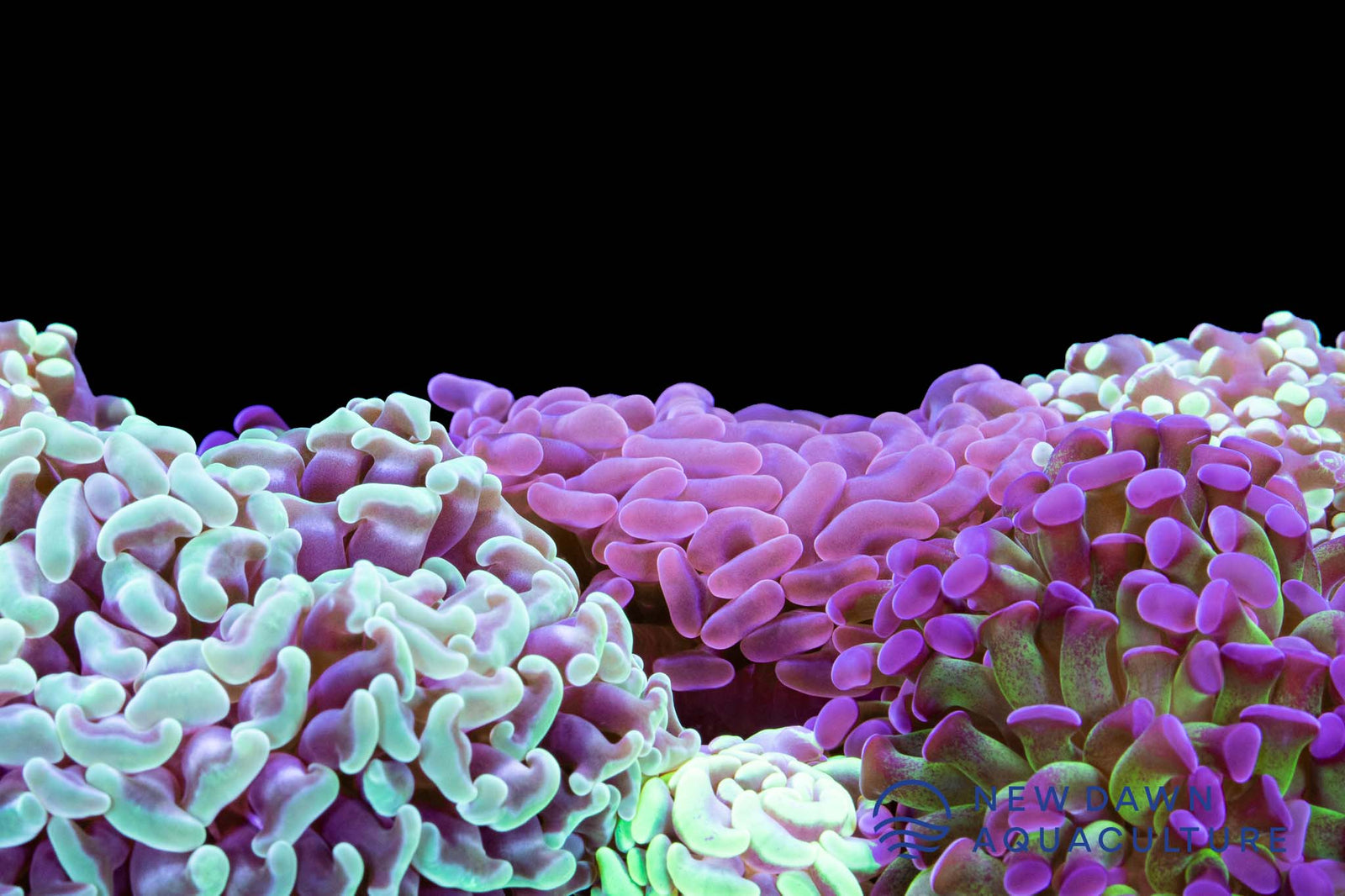There is a common piece of advice given when it comes to keeping Euphyllia gardens in reef tanks. You will hear people say, "You can keep all species of Euphyllia together except for torch corals". While this advice is sound in practice, I feel it illuminates why a better understanding of coral taxonomy is necessary in this hobby. In 2017 a genetic study was done, this study moved almost all species belonging to the genus Euphyllia to a new genus Fimbriaphyllia.
Here are the two genera today:
Fimbriaphyllia |
Euphyllia |
||
| Species | Common Name | Species | Common Name |
| divisa | Frogspawn Coral | glabrescens | Torch Coral |
| paradivisa | Branching Frogspawn Coral | cristata | Grape Coral |
| ancora | Hammer Coral | ||
| paraancora | Branching Hammer Coral | ||
| yaeyamaensis | Octospawn Coral | ||
| paraglabrescens | |||
| baliensis | |||
So in reality the advice that should be given is: You can keep a Euphyllia garden or, you can keep a Fimbriaphyllia Garden. This reclassification explains why Torch Corals have always been the odd one out.
There is a lot of work being done in the field of coral taxonomy and it seems like many corals are being reclassified all the time, so I wouldn't be surprised to see further reclassifications or new species in these two genera in the years to come.
Does This Apply to Other Genera?
While I feel it's a good rule of thumb there are certainly exceptions to this. It's well known that some species of Acropora will kill others, especially when the tank conditions aren't ideal.
That being said, if you're trying to mix corals into gardens, it's best to make sure that they are of the same species or at least the same Genus. All too often I get a question from a customer asking me why one of the acans in their acan garden is killing the rest. Just to see a photo of one Acanthastrea echinata surrounded by many Micromussa lordhowensis. Or someone wondering why all of their Favias are fighting yet the photo they send has a Coelastrea, a Goniatrea, a Favites, and a Dipsastraea all in close proximity. Both of these scenarios will lead to corals fighting with each other for territory.
These mistakes fall on the vendors for misidentifying these corals when selling them. Obviously they are hard to identify and you can't expect most new hobbyiest to know the difference between a Coelastrea and a Dipsastrea, but if the corals were accurately identified when being sold, it would lead to a lot less coral deaths in people's tanks due to aggression. This is why we do our best to properly identify every coral we sell and try to be as accurate as possible to modern coral taxonomy.

